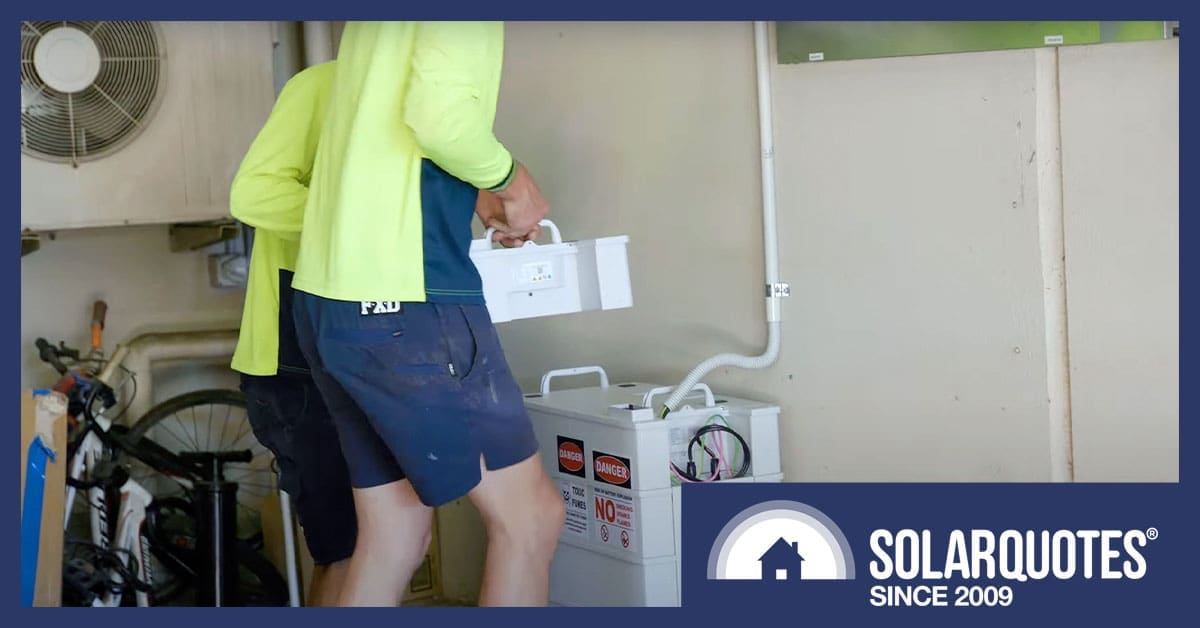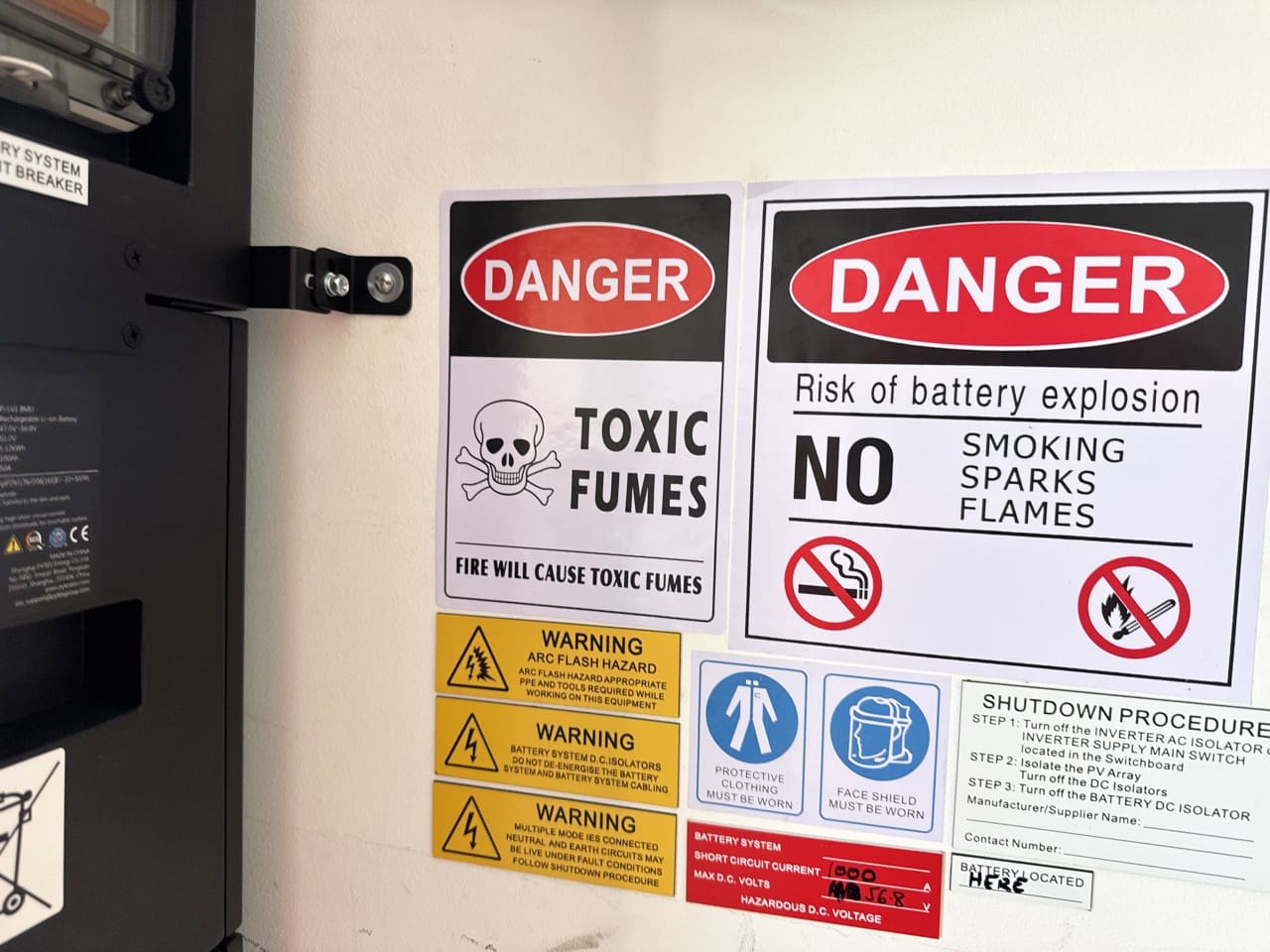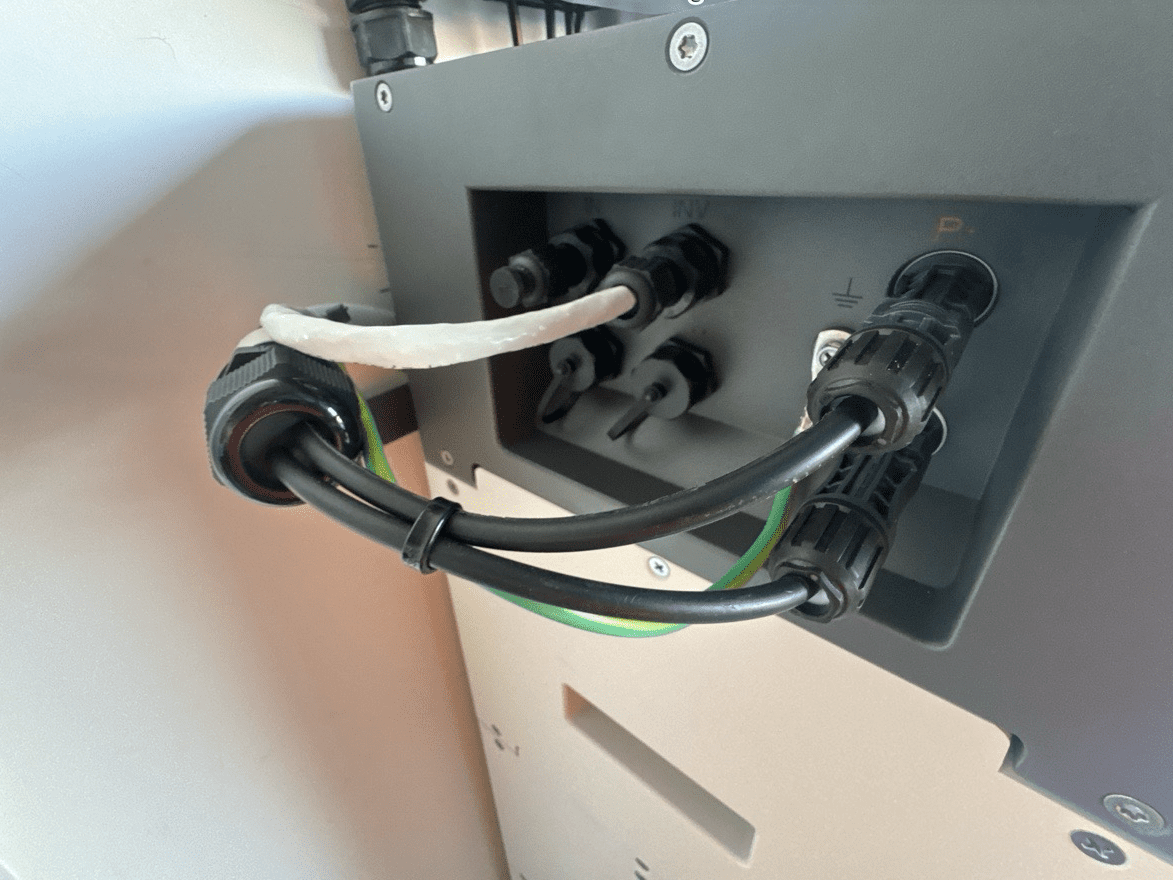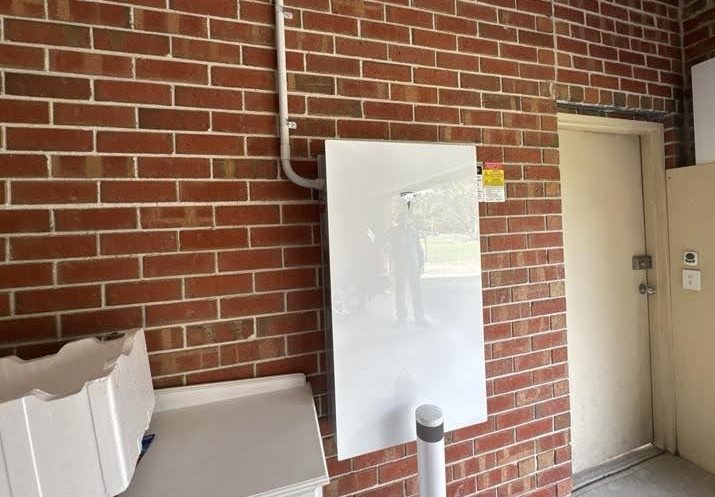 Here’s how to check over a home battery installation before your installer leaves — as explained by a licensed electrical inspector.
Here’s how to check over a home battery installation before your installer leaves — as explained by a licensed electrical inspector.
The Job’s Not Done When the Tools Are Packed Away
You’ve just had a shiny new home battery installed. The electrician has packed up, handed you the manual (hopefully), and said something like, “She’s all set.” But your battery isn’t working yet — or worse, you’re not quite sure if it is.
As a licensed electrical inspector, I often arrive on-site after the install, but before the customer can start using their system. I’m the one who checks that everything is safe, compliant, and actually ready to go. Sometimes I give the green light, and other times I need to delay energisation until certain issues are addressed.
Are Inspections Required On Home Battery Installs?
If you’re in Victoria, it’s not optional — every single battery installation must be inspected by a licensed electrical inspector before the system is energised. No exceptions.
In other states, things vary. Some may require an inspection as part of the approval process, while others rely more heavily on random inspections — such as those carried out by the Clean Energy Regulator or a state-based audit program.
No matter where you live, there’s always a chance your installation could be inspected, either shortly after installation or even months down the track.
A good installer should explain this from the start, so you’re not left wondering why your battery isn’t switched on yet – or why an inspector is wanting access to check the system over.
Regardless of whether an inspector is going to check out your new battery, it is a good idea to do your own assessment of an install.
Compliance Isn’t Optional — It’s the Baseline
A battery installation isn’t finished when the cables are tucked away and the lights come on. It needs to meet a minimum set of compliance standards, including:
- AS/NZS 3000 (the Wiring Rules)
- AS/NZS 5139 (Battery Energy Storage Systems)
- AS/NZS 4777.1 (Grid Connection of Energy Systems via Inverters)
If those standards aren’t met, your system is not compliant — and more importantly, it might not be safe.
Labelling: Done Right or Done Wrong

Image of overuse of warning labels. Most of these labels can be condensed & combined to not look so offensive to the system owner.
Labelling is one of the most misunderstood — and misused — parts of a battery install.
Installers who haven’t had the right training often try to cover themselves by slapping on every label in the kit, thinking more is better. The result? Systems that are confusing, messy, and sometimes alarming to homeowners.
What good labelling looks like:
- All equipment must be clearly and correctly labelled, so you know what everything is;
- Labels must be installed in the correct positions and must meet current standards, not just whatever’s left in the bottom of an old toolbox;
- Monitoring screens, inverters, battery enclosures, and isolators must all be labelled properly;
- Not every label is required — especially the over-the-top ones with skulls, multiple toxic fume warnings, electrolyte burns, or explosion icons, which often do more to scare than to inform;
- Good installers customise their labels, so the system is informative without being overbearing;
- It’s not easy for a homeowner to know which labels are still compliant and which ones are relics from an outdated standard. But if your installer is using old kits, it could be a sign they’re cutting corners or in need of retraining.
Everything Enclosed — No Exposed Terminals

Battery cables exceeding DVC-A must be mechanically protected all the way to the terminals. This install does not meet this requirement.
This one’s straightforward.
- All DC battery cabling must be enclosed — all the way to the terminals with higher voltage batteries;
- No exposed live terminals — anywhere;
- All equipment must be mounted with correct clearances, as required by the relevant standards & manufacturer’s instructions;
- Where applicable, barrier protection is required.
For example, if your battery is installed on the other side of a wall backing onto a habitable room (like a bedroom or lounge), barriers are mandatory. These must be compliant, must not be penetrated, and any holes — like vents in brickwork or cable entries — must be sealed.
These aren’t nice-to-haves — they’re mandatory for safety and compliance.
Already Got Solar?
A large number of battery installations these days are add-ons to existing solar systems — and this is where things can get tricky if the installer doesn’t understand how to integrate them properly.
You might fall into one of the following scenarios:
- You’ve kept your old solar system exactly as-is, and the battery has been added alongside it;
- Your old solar inverter has been removed and replaced with a hybrid inverter that handles both solar and battery;
- A completely new solar and battery system has been added alongside your existing system.
Each of these setups comes with its own set of challenges — from wiring and compliance to communication between inverters and battery units.
The key question is: does your existing system interact safely and effectively with the new one?
A professional installer must:
- Confirm the safety and compliance of your existing system — not just assume it’s good to go;
- Check whether existing components — like isolators, AC cabling, switchboard configuration, or inverter type — meet the requirements of the new system;
- Identify whether anything needs to be repaired, replaced, earthed or upgraded to ensure safe integration;
- Ensure that monitoring, export control, and system communication all function properly;
- Explain exactly how the old and new systems interact, both physically and digitally.
Commissioning: More Than Just Powering Up
Proper commissioning is critical. Unfortunately, it’s one of the steps that’s skipped most often.
Here’s what commissioning should include:
- The battery is tested under load conditions;
- Battery and inverter communication is checked;
- Monitoring portals (app, desktop, or on-device screens) are activated and functional;
- Alternative supply circuits (commonly referred to as backup circuits) are verified, labelled, and tested;
- Parameters are configured — such as charge/discharge limits, and whether the battery can be force-charged or force-discharged;
- The system is confirmed to operate safely in alternative supply mode (when the grid goes down).
If these steps haven’t been completed properly, your battery may not operate safely or as expected.
Neatness Is a Clue

A neat and tidy home battery install.
Compliance is king — but a tidy install tells you a lot about the person who did the job.
You don’t need to be an electrician to spot when something’s been rushed. Crooked labels, sloppy conduit runs, tangled cables, or an isolator you can barely reach — these all suggest a lack of care.
Look for:
- No exposed wiring;
- Proper cable support and enclosure;
- Clear access to switches and isolators;
- Labelling that actually helps you understand your system;
- A general sense that the installer took pride in their work, not just clocked in and out.
A clean, organised installation is often a sign that the important (invisible) work has been done right too.
This is the first in a two part series on what to do after an install. Subscribe to our free weekly newsletter to be emailed Pat’s follow-up piece on the vital information to find out from an installer before they leave.

 RSS - Posts
RSS - Posts



Something to add:
Commissioning of a battery / gateway system usually includes activation of a control App. One function of that App is control of the rate at which the battery will charge or discharge, and control of the max. import & export rates to/from the property via the Gateway.
Power distribution companies usually have a restriction on max. export rate (typically 5kW per phase, but check locally), and the installer will likely restrict this function on the App, (and possibly also the import rate), until final inspection is complete (Certainly this is the case in VIC).
However, after inspection and sign-off, the “lock” on the app should be released, or at least “adjusted” to whatever the maximums allowable by the power distributor are. This does not always happen automatically, and there are reports of customers (including me) having to go back to their installer to get these restrictions removed or adjusted. Keep an eye on yours!!
Had a battery installed today looks ok but how would I know. The inspection is possibly 2 to 3 weeks away no one mentioned that before . I’m in Gippsland if you are passing through
Labeling is a nightmare…
However, if you miss 1 label, an inspector can ping you and make you return to site to correct it. It happened to us as we forgot to put a “battery” sticker on the 50cm conduit between the inverter and the battery directly underneath it, while you could clearly see the connection…
So I understand the installers who put all the labels in the kit, because at worse, they’ll get a note saying “such and such labels aren’t required” but at least they won’t have to go back to site to correct it.
The labeling requirement in the standard is the issue, as you pointed out in your previous article, and until THAT changes, (all) these stickers will keep being put next to every battery installed…
Compliance doesn’t mean you have to be ignorant though, you can see in the photo that the “battery located” sticker isn’t meant to be there, but inside the switchboard.
Why can’t we access the standards that we must adhere too?
I’m the type of person who likes to sense check things. Knowing a level of standards before someone comes on site would assist in making sure my house is prepped for the tradesman to complete their work.
But unfortunately there isn’t an easy way for me to access these standards.
Hi greg,
We feel your pain.
https://www.solarquotes.com.au/blog/australian-standards-cost-free/
So do master builders
https://www.solarquotes.com.au/blog/australian-standards-free-petition-mb2437/
The solar and batteries installer, I assume should be the qualified electrician installed them. Do I or they still need to do seperate compliance check after the installation?
out of curiosity, should (or do) all players involved in an install get paid for their role performed only after a successful & compliant official electrical inspection,
and a customer is made aware of what they now own, and it aligns with what they believed they were signing up for.
I am concerned & intrigued, as the list of “variables” a customer needs to know appears to be getting longer the less I want to know.
sorry, but the “industry” still reads like the wild west, unless you have a depth of knowledge, intelligence & pockets, to understand what one is getting involved in.
and yes, I have to believe that most involved have integrity, it just seems, to me, to be fraying around the edges more instead of maturing.
“All DC battery cabling must be enclosed — all the way to the terminals with higher voltage batteries”
I was wondering which rule or standard the above statement was based on? I figure mentioning ASxxxx section yyyy clause zzzz might give a complaint to an installer more chance of being actually addressed.
Does it apply only at the battery, or also at a separate inverter? What about DC solar cabling? Is this a new rule?
Looks like it’s under
AS/NZS 5139:2019 CL 5.3.1.4.3, which mandates that cables in certain configurations must be adequately protected to prevent physical damage.
5.3.1.4.3 Mechanical Protection
All cables that exit a pre-assembled battery system without internal overcurrent protection shall be mechanically protected by at least medium duty conduit or equivalent protection up to overcurrent protection device.
So seeing that battery is a BYD HVM/HVS that has internal over current protection, then that installation is compliant.
So the comment posted is incorrect.
Thanks Alan,
Well spotted.
New model BYDs have a different orientation, so the plugs are parallel with the side of the battery, but inside the recess. They’ll be much harder to damage.
I contend that all PV system installations should be required to be inspected by regulatory inspectors.
With everything that has happened with the current PV system that we have, I have no confidence that the system is compliant with any regulations, or, is safe.
With a 5kW hybrid inverter and BESS, initially, the installer intended to use a 20A A/C bypass switch (I required a A/C bypass switch). Then, it was changed to be a 25A switch. After the initial inverter failed, the 25A bypass switch, which was regarded as having failed, was replaced with a 40A switch. The inverter was subsequently confirmed to have failed, and was replaced, and, an unknown external switch was added without explanation, and, the shutdown procedure instructions were removed and not replaced. The inverter model specifications state that the inverter can draw 43A from the grid (through, first, a 25A switch, and, now, a 40A switch). The cabling is not specified by the installer, so is likely at most 32A.
Hi Bret. Quite annoying. If you have photos of the original install, it should be possible for someone to replace the labels?
Also, these things are quite complex, but some inverters have configurable settings for the circuit breakers they are wired up to. It is possible that, even though the inverter is capable of drawing 43A, it might have been configured to only draw 20A?
P.S. 25A does sound a little small. Hopefully, the installer used appropriately sized cable.
P.P.S. I assume you mean AC bypass, which would be for the BESS output, or backup circuit. I would read A/C bypass as Air Conditioning bypass!
Regarding the AC / A/C thing, since you invoked semantics, meanings are usually derived from contextual usage.
AC can mean either air-conditioning or alternating current, as only two of the uses – AC Fred Bloggs can mean Aircraftman Fred Bloggs (air force equivalent of Private), and, Fred Bloggs AC can mean Fred Bloggs, Companion of the Order of Australia (an award for privileged people in Australia). AC can also mean Assistant Commissioner, as a police force rank. Again, these are only some of the meanings of AC. See https://en.wikipedia.org/wiki/AC
A/C can equally mean air-conditioning or alternating current, and, can mean account, or, “on account of”. No doubt, many other meanings exist, but, those are sufficient to demonstrate that the character string can have different meanings, depending on contextual usage.
I reiterate – the meaning of each of the two strings, depends on the contextual usage.
Regarding no stickers on the inverter or BESS, I am trying to get both replaced.
I have 30kw solar feeding into my new 30kw battery. The battery’s app shows where the power is coming from and going to, EG solar to house and excess solar to battery. But I see that I am still drawing from the grid. I am not convinced the system has been set up correctly. How can I check this? Who can I get in to confirm the wiring is correct?
Hi Jamie,
How big are the numbers? Click here for more.
QUESTION: Are battery installers required to document via a diagram that shows the complete connections of: Grid, EV charger(s), Battery Gateway, Solar Inputs and Home Backup circuits ?
I am pretty familiar with swtichboards and electrical connections however the complexity of battery, battery gateway, backup circuits, solar inputs and EV chargers makes it a bit “intimidating” for any electrician to do any subsequent work on my installation.
I had a new solar panel/inverter/battery installed late July 2025. The installation was OK just not to my exacting standards It was neat but they say a good tradesman can hide their mistakes. No one wanted to take responsibility for the attachment of the system to the brick wall. Half the attachments are in the mortar!
On a good day the panels cover our usage and top the battery up to 99/100% waiting for the nighttime running of the house from the battery.
It is still a steep learning curve to educate the other power hogs in the family when is the right time to use excess energy that goes out to the grid if we don’t get smarter.
Cloudy days do not always top the battery up.
One major gripe is that all the signage is devoid of useful information such as open cct. voltage, short cct. current etc. that does not allow me to see if the system is working to the maximum capacity, and be able to quickly see if there is a problem with the system. The inspector did not react to my question.
I feel your pain there. We are in the process of getting a 20 kw battery installed and I questioned why ‘unistrut’ is not used in place of builders spacers and was told ‘there no real standard for this and these are very common in solar / battery setups’. Will probably dismount and reset with a tradesman electrician – while not touching the wiring.
Hello,
Have been an E. T. For 30+ years and-entering retirement, I am just been waiting for the solar industry to shine.
So far I could use any help to put together a complete install in my mid-west home.
Cordially,
John
If you have microinverters, check each of them comes back online and is producing power. Had a battery installed on monday and I only check that the entire system was producing power. Didn’t realise till the next day when it alerted 10 of my 32 microinverters has stopped production (zero AC voltage). Now wiating for when the battery installers are going to come back to fix it while seeing my solar production cut by 1/3